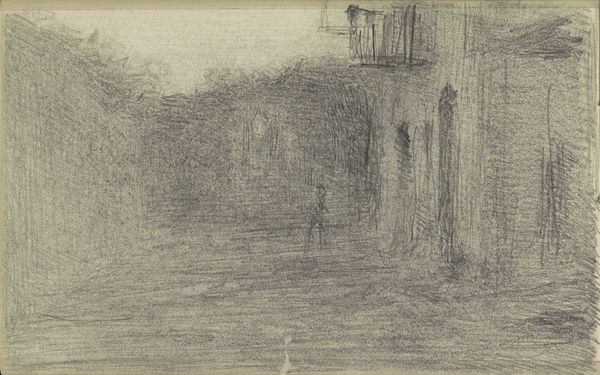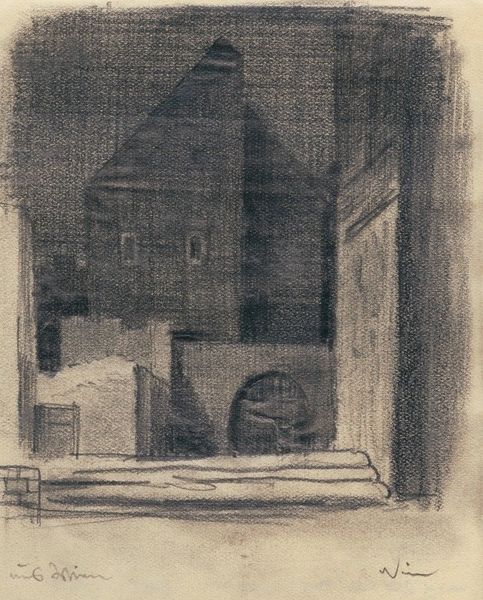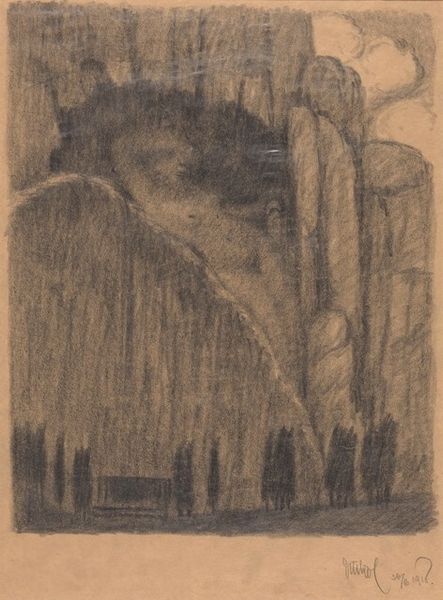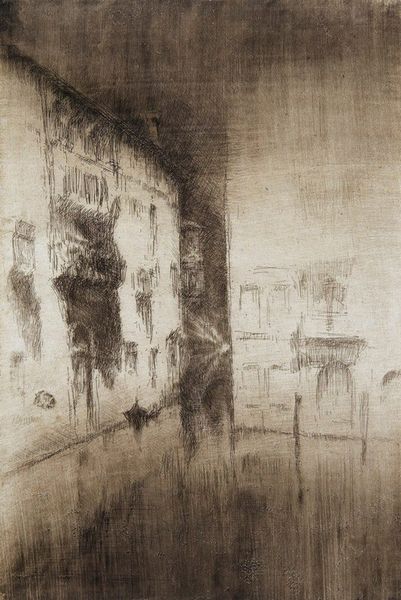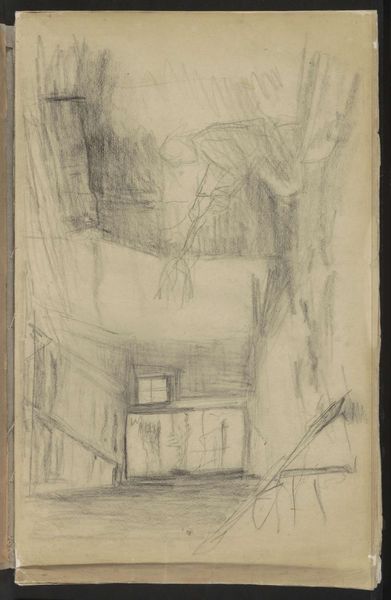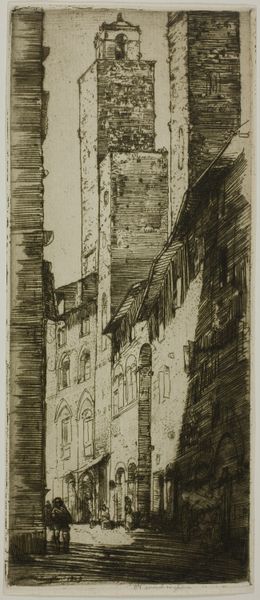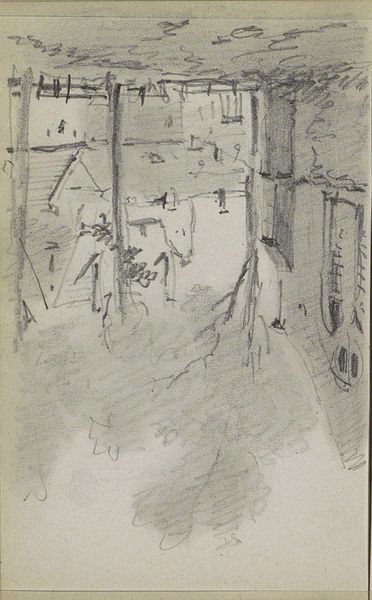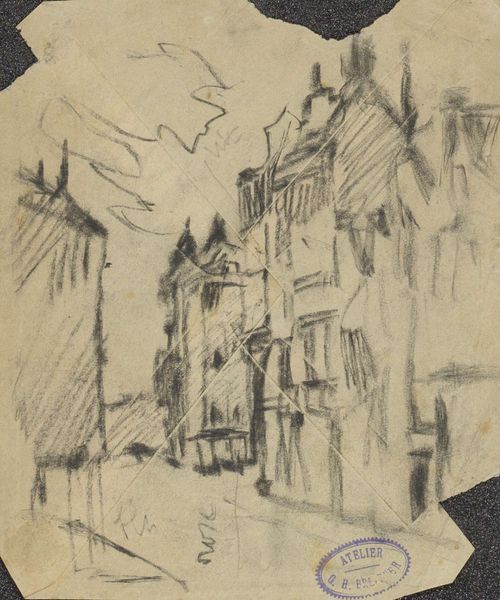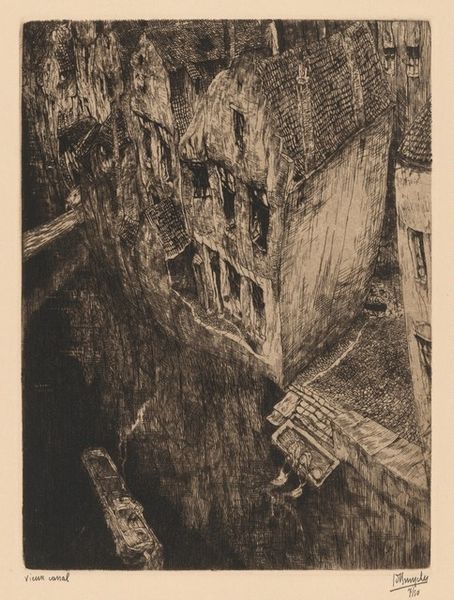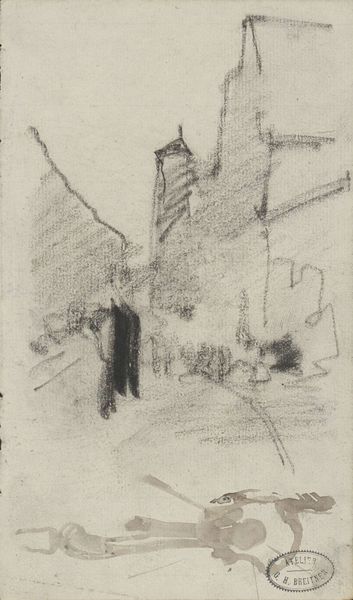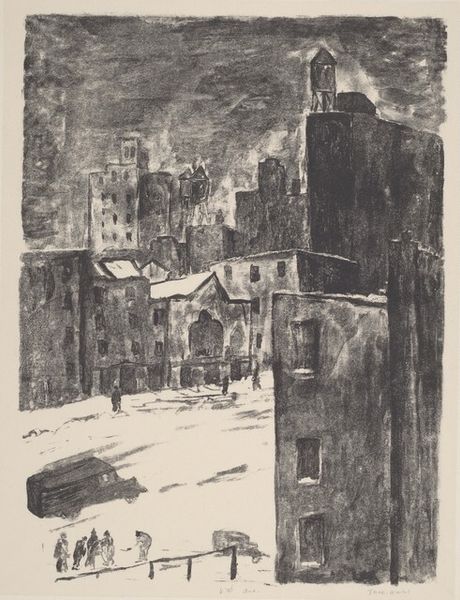
drawing, charcoal
#
drawing
#
charcoal drawing
#
geometric
#
expressionism
#
line
#
cityscape
#
charcoal
Copyright: Public domain US
Curator: Max Gubler’s charcoal drawing, "City Street in the Night," created around 1917, presents a stark urban scene. What strikes you first about this work? Editor: Claustrophobia, honestly. Like the buildings are pressing in, the light is failing, and those figures, swallowed by the shadows… it's more unsettling than comforting. Makes me want to immediately be anywhere else. Curator: It’s fascinating you say that. Considering its historical context, that feeling makes sense. Expressionism was, in many ways, a reaction to the increasing anxieties of modern urban life, especially during periods of war. You can almost feel the societal pressure within those charcoal lines. Editor: War anxieties for sure. I mean, it’s mostly tonal – so, all mood. The slanting lines give the sense of it all sort of... listing. There's a strong feeling of disequilibrium. Like the whole world is about to slide into the gutter. Are those buildings or prison walls? Curator: A potent observation. What's also striking to me is how Gubler utilizes charcoal, a readily available material. It suggests an urgency to capture the scene, but also democratizes the artistic process, making art more accessible. This ethos was very important for progressive artists at the time. Editor: Absolutely, and the marks themselves are quite vigorous and free—nothing timid here! Also, is it raining, or just a product of the frenetic charcoal? Maybe it does not matter, perhaps it evokes a sense of something unseen weighing down on the city. Heavy air. Curator: Precisely. That ambiguity highlights Expressionism’s departure from realism, prioritizing the emotional impact over literal depiction. This image echoes some broader post WWI trauma. Editor: And you know, looking at it longer, I'm getting that lonely vibe—those small figures are moving off on their own journeys, separate but together under this oppressive cityscape. It really catches the sense of big city alienation. Curator: So, we started with discomfort and now there’s a shared, yet solitary journey in it as well. “City Street at Night” reveals, perhaps, how a historical object can also hold contemporary resonance. Editor: Yeah, art history hitting different today! Good thing to mull over when stepping back out into the actual city!
Comments
No comments
Be the first to comment and join the conversation on the ultimate creative platform.


